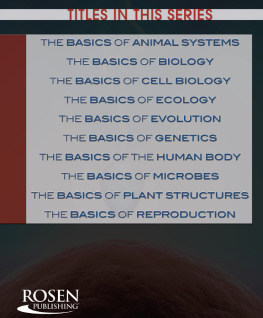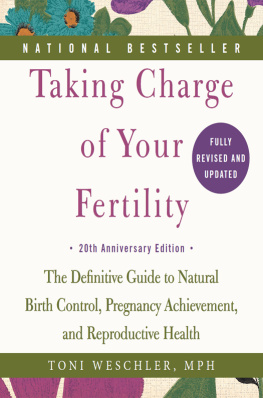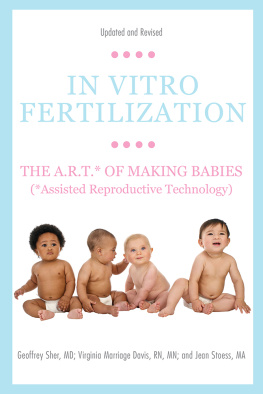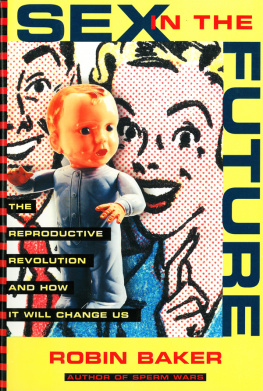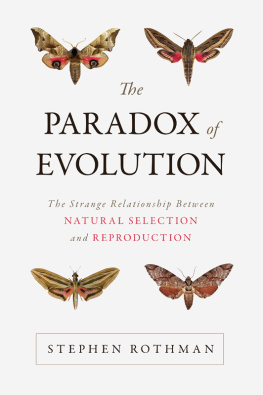Martin R. - How We Do It The Evolution and Future of Human Reproduction
Here you can read online Martin R. - How We Do It The Evolution and Future of Human Reproduction full text of the book (entire story) in english for free. Download pdf and epub, get meaning, cover and reviews about this ebook. genre: Science. Description of the work, (preface) as well as reviews are available. Best literature library LitArk.com created for fans of good reading and offers a wide selection of genres:
Romance novel
Science fiction
Adventure
Detective
Science
History
Home and family
Prose
Art
Politics
Computer
Non-fiction
Religion
Business
Children
Humor
Choose a favorite category and find really read worthwhile books. Enjoy immersion in the world of imagination, feel the emotions of the characters or learn something new for yourself, make an fascinating discovery.

How We Do It The Evolution and Future of Human Reproduction: summary, description and annotation
We offer to read an annotation, description, summary or preface (depends on what the author of the book "How We Do It The Evolution and Future of Human Reproduction" wrote himself). If you haven't found the necessary information about the book — write in the comments, we will try to find it.
Despite the widespread belief that natural is better when it comes to sex, pregnancy, and parenting, most of us have no idea what natural really means; the origins of our reproductive lives remain a mystery. Why are a quarter of a billion sperm cells needed to fertilize one egg? Are women really fertile for only a few days each month? How long should babies be breast-fed?
Martin R.: author's other books
Who wrote How We Do It The Evolution and Future of Human Reproduction? Find out the surname, the name of the author of the book and a list of all author's works by series.
How We Do It The Evolution and Future of Human Reproduction — read online for free the complete book (whole text) full work
Below is the text of the book, divided by pages. System saving the place of the last page read, allows you to conveniently read the book "How We Do It The Evolution and Future of Human Reproduction" online for free, without having to search again every time where you left off. Put a bookmark, and you can go to the page where you finished reading at any time.
Font size:
Interval:
Bookmark:
How We Do It
How We Do It
The Evolution and Future of Human Reproduction
ROBERT MARTIN
BASIC BOOKS
A Member of the Perseus Books Group
New York
Copyright 2013 by Robert Martin
Published by Basic Books,
A Member of the Perseus Books Group
All rights reserved. Printed in the United States of America. No part of this book may be reproduced in any manner whatsoever without written permission except in the case of brief quotations embodied in critical articles and reviews. For information, address Basic Books, 250 West 57th Street, 15th Floor, New York, NY 10107-1307.
Books published by Basic Books are available at special discounts for bulk purchases in the United States by corporations, institutions, and other organizations. For more information, please contact the Special Markets Department at the Perseus Books Group, 2300 Chestnut Street, Suite 200, Philadelphia, PA 19103, or call (800) 810-4145, ext. 5000, or e-mail special.markets@perseusbooks.com.
A CIP catalog record for this book is available from the Library of Congress.
ISBN: 978-0-465-03015-6 (hardcover)
ISBN: 978-0-465-03784-1 (e-book)
10 9 8 7 6 5 4 3 2 1
I dedicate this book to Anne Elisenatural mother par excellence and my best friend
CONTENTS
CHAPTER 1 |
CHAPTER 2 |
CHAPTER 3 |
CHAPTER 4 |
CHAPTER 5 |
CHAPTER 6 |
CHAPTER 7 |
CHAPTER 8 |
A lone with their baby for the first time, a new mother and father are flooded with novel emotions and a whole new kind of love. Although they cannot know what they will experience over the weeks and months ahead, they have now experienced firsthand the miracle of life. For them, this moment is one of a kind, a unique event in the history of humankind. Yet to reach this point took not nine months but millions of prior generations. What the mother has undergone and how the pregnancy and mothering will change her, what the father has contributed, and how this tiny, helpless infant will gradually develop into a full-grown adult belong to a story much bigger than theirs. It is the natural history of how human beings reproduce.
Human reproduction has an extensive natural history, and biological adaptations with that kind of pedigree demand our attention. However, the evolutionary background to human reproduction rarely has been examined in depth. This is odd, as successful breeding is the key to evolution.
Furthermore, despite the common assumption that natural is better when it comes to having and raising children, few have thought to ask what is really naturalhow did we evolve to reproduce and raise children? In order to answer this question, we must peer millions of years into the past. The features of our reproductive biology evolved in our vertebrate and primate forebears, including the basic anatomy of our reproductive organs, internal fertilization, breast-feeding, and the practice of toting babies around. By understanding howand in what environmentthese features evolved, we can make reproductive decisions that ensure our health and well-being and that of our offspring.
But this book is not about returning to a primitive lifestyle. In todays world it would be absurd to try to return to the kind of existence led by our primate forerunners or even our gatherer-hunter ancestors. Rather, it will provide much-needed context for our current reproductive behaviors in order to dispel harmful notions, promote practices and technologies that reflect a deep understanding of natural human biology (e.g., the birth control pill), and, most of all, put minds at ease about such fraught topics as breast-feeding duration, different forms of birth control, and attachment parenting. The scientific mysteries explored will, I hope, lead readers to better decisions on their reproductive journeys. Ultimately, my goal is to enhance the richness and naturalness of the reproductive experience by connecting it with the entire history of Homo sapiens , that remarkably equipped primate.
* * *
E VERYTHING BEGAN WITH SEX , so that is where the story begins. In is about cycles and seasonality. Why do women, apes, and monkeys menstruate, while most other mammals do not? Are women fertile only during a few days in each menstrual cycle? I explore the implications of seasonal patterns in conception and birth, especially regarding the conflict between our biological clocks and the modern age of electric light.
take us from mating to conception. What is natural in human matingmonogamy, harems, or promiscuity? Are our reproductive systems adapted for competition between sperms from different men? Turning to pregnancy and birth, I look at possible evolutionary reasons for the dreaded morning sickness. Did nausea and vomiting evolve to protect the fetus against perils of the mothers diet? I also explore the mystery of why human birth is uniquely challenging, making help from midwives almost indispensable.
We move on to development in , I close with a discussion of how we apply scientific understanding of our reproduction to constrain it through contraception or promote it through assisted reproduction.
* * *
W HENEVER I GIVE a public lecture on human evolution, during question time somebody in the audience is likely to ask me what I can say about the future. Evolutionary biology is a largely historical science, and we cannot reliably predict how evolution will proceed. But many medical interventions have reduced or even arrested the action of natural selection. Genetic predispositions that would have been purged by negative selection in the past now slip through the net. For instance, we deliberately bypass natural selection when we combat infertility with assisted reproduction. Individuals with a genetic predisposition for infertility may pass this on to offspring that would not have been born naturally. Fertilizing an egg with a single sperm in the laboratory, for instance, circumvents natural filtering mechanisms. Indeed, reproductive technology has developed to the point where most complications can be overcome, whether its infertility, premature birth, or otherwise compromised deliveries. And while we seemingly have found ways to solve many reproductive challengesto the relief and joy of parents everywheredelight has overshadowed basic questions about long-term consequences.
This book has roots descending deep into the past and took more than fifty years to germinate from its initial seed. But the core subject of evolution has far, far deeper roots, stretching back more than 3 billion years to the beginnings of life on Earth. So perhaps I have some excuse for taking so long. At any rate, I present here what I hope is a comprehensive examination of the subject, from sex cells to weaning. It is a full reconstruction of our evolutionary past, aimed at providing a better basis for understanding our present and future.
My goal is not to convince you that we have firm answers to any of the questions I have raised, but rather to make you aware of how far we have come in understanding the natural background to human reproduction in the 150 years since the science of evolutionand the exploration of human originswas launched. One of the key lessons that I have learned from studying the natural world is enormous respect for complex systems that have evolved over millions or even billions of years. With this book, I would like to share that powerful feeling with fellow parents everywhere, past, present, and future.
CHAPTER 1
W here do babies come from? Many parents sidestep a truthful answer to this innocent childhood question, instead mumbling about storks or gooseberry bushes. But until only three hundred years ago any answer would have been a fairy tale. In antiquity, pregnancy was thought to result from mixing semen with menstrual blood. At first contact a few modern populations, such as the Arunta tribe of Australia and the Trobriand Islanders of Oceania, reportedly still had not connected copulation to pregnancy, although it later emerged that Trobrianders also believed that mixing semen with menstrual blood led to pregnancy. We dont know how and when people first recognized the link between sex and pregnancy, but it was probably not far back in prehistory. The domestication of mammals, starting around 10,000 years ago, must have yielded telling clues, with a basic grasp of reproductive biology being one early by-product of animal husbandry. Procedures such as castration, widely used to reduce aggression in male mammals, would have led to additional insights. Yet conception and birth are nine months apart in humans, so a major breakthrough was needed to recognize the link. Even then, fanciful notions regarding reproductive mechanisms persisted long afterward.
Next pageFont size:
Interval:
Bookmark:
Similar books «How We Do It The Evolution and Future of Human Reproduction»
Look at similar books to How We Do It The Evolution and Future of Human Reproduction. We have selected literature similar in name and meaning in the hope of providing readers with more options to find new, interesting, not yet read works.
Discussion, reviews of the book How We Do It The Evolution and Future of Human Reproduction and just readers' own opinions. Leave your comments, write what you think about the work, its meaning or the main characters. Specify what exactly you liked and what you didn't like, and why you think so.

